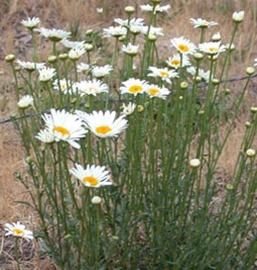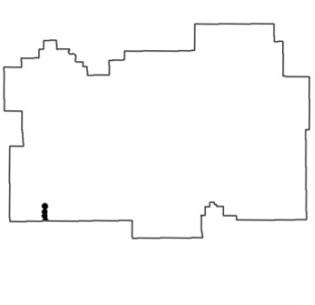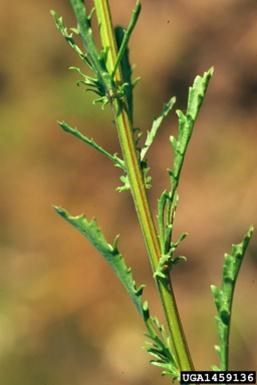
NPS Photo/ Mel Harte Plant Description
Ox-eye daisy (Leuceanthemum vulgare) is a perennial herbaceous species with a creeping root system. Individual plants can reach 1 to 3 ft. in height and have up to 40 flowering stems. Leaves are 1 to 4 in. long, toothed or lobed, and clasp the stem. Basal leaves are spoon-shaped and lobed. The white, daisy-like flowers begin to appear at the tops of stems in early June and continue flowering until the first hard freeze. The root system consists of unbranched roots and rhizomes. Native to Europe, ox-eye daisy was introduced into the United States as an ornamental in the 1800s.

Habitat and Park Description
Ox-eye daisy has been reported numerous times along the park highway between the southern park boundary and Sulphur Works. Consistent treatment eliminated this species from the park in 2007. However, reinvasion of Lassen Volcanic NP is likely, given that ox-eye daisy is common along the margins of Highways 44 and 36 just outside the park. Ox-eye daisy occurs primarily in disturbed moist habitats that receive at least partial sun. Roadsides are the most common sites, but meadows, lakeshores, and riparian areas are also used by this species.

Utah State University/' Steve Dewey Ecology and Reasons for Concern
Ox-eye daisy is an aggressive invasive species. Once established, it can spread rapidly by means of roots and seeds into undisturbed meadows, woodlands, and riparian areas. It forms dense stands that tend to displace native vegetation, especially wildflowers. The end result is a species-poor plant community of use to few wildlife species. Oxeye daisy can thrive in a wide variety of soil types and can grow in sun to partial shade. Most of Lassen Volcanic NP is drier and colder than the daisy will tolerate, but it remains a threat to invade the unstable slopes and meadows near the Southwest Visitor Center and Sulphur Works. Ox-eye daisy is difficult to control or eradicate, since a new plant can regenerate from rhizome fragments. Each flower head can produce up to 200 seeds that spread by wind or animals and remain viable in the soil for several years. Read about other invasive plants in the park.
|
Last updated: February 28, 2015
